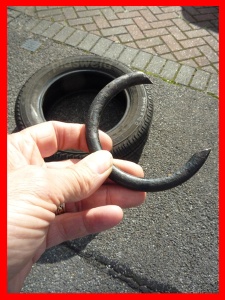This post
is a little behind the curve when it comes to those winter checks. Those who were on the ball would
have dealt with these important checks part way through the autumn months. Then
again with the way the climate is going you could have snow in the middle of
summer. Knowing when to do it has become a bit of a guessing game. Let's
just say that historically the autumn is the time to do it.
Things
that should be checked:
•
Anti-freeze,
•
Battery,
•
Wind
screen wipers and screen wash.
•
Tyre
pressures and tread depth.
Anti-freeze
The most
critical thing you should be checking is the strength of the anti-freeze.
Nowadays it is more than an additive that stops the engine freezing, popping a
core plug and/or stripping a cambelt. It also stops sludge building up causing
blockages and retards corrosion in the engine block.

It is quick
and easy to check with an anti-freeze tester.
Which is basically an overgrown eye dropper with discs in it. With the
cap off the expansion tank, you place the tube of the tester into the fluid and
draw it up into the clear tube once the flow has stopped and the discs have
stabilized into two groups some floating and others sinking you can work out
how strong the mix of anti-freeze is. It is far better to have more dices
floating, giving you the protection needed nowadays for double minus figures.
Over recent years this has become more important with temperatures dropping to
an unprecedented minus twenty-five degrees centigrade.
Battery.
Most modern-day batteries are sealed and filled with a gel, so the main check here is to see
if the terminals are clean, tight and not corroded. If they are, you can use
boiling hot water to remove it. Be careful using this method and only do one
terminal at a time so you do not short the battery out. Once done smear a small
amount of petroleum jelly on each terminal to stop the corrosion coming back.
If you have the older lead acid batteries that need to be topped up with
de-ionized water, you are more likely to find the terminals corroded. The same
clearing method applies. You will also need to check that the level of the
water in the cells is covering the plates, if not they will need topping up
with deionized water.
Windscreen Wipers and screen wash.
 Windscreen
wipers are one of the most neglected items on a vehicle along with tyres. Some
people will not replace their wiper blades until they are hanging off and even then, wait till the next service.
It beats me how they see out the window to drive in the pouring rain and not
hit what is in front of them. The freezing weather destroys the efficiency of
your wipers faster than at any other time of the year. When they slide across
that ice cover screen it makes minute nicks in the wiping edge. That is if they
have remembered to un-stick them from the screen not burning out the wiper
motor, it still surprises me how often this happens. You have been warned. When the temperature drops so the strength of the screen wash should go up. This prevents it freezing so you can use it.
Windscreen
wipers are one of the most neglected items on a vehicle along with tyres. Some
people will not replace their wiper blades until they are hanging off and even then, wait till the next service.
It beats me how they see out the window to drive in the pouring rain and not
hit what is in front of them. The freezing weather destroys the efficiency of
your wipers faster than at any other time of the year. When they slide across
that ice cover screen it makes minute nicks in the wiping edge. That is if they
have remembered to un-stick them from the screen not burning out the wiper
motor, it still surprises me how often this happens. You have been warned. When the temperature drops so the strength of the screen wash should go up. This prevents it freezing so you can use it.
Tyre's.
What can I
say, Tyres are the most neglected safety item on the vehicle! You should check
the pressures regularly as the right pressures will save you money on fuel. If
the tread depth is down to the wear bars (one point six millimetres you should
replace them as this increases the chances of aqua planning and increases fuel
consumption among other things.
If you look
after your vehicle, it will look after you.






